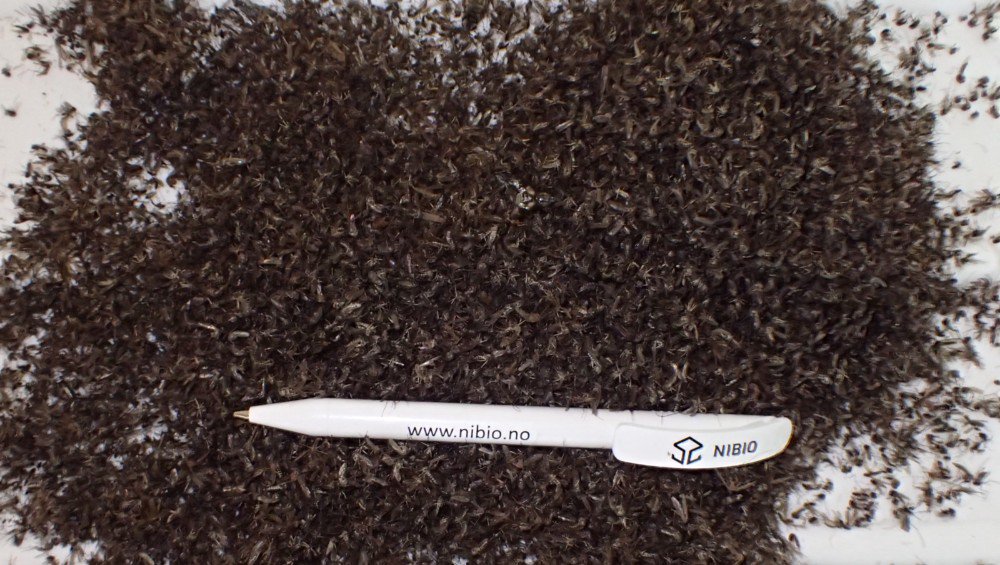Better living conditions in the Arctic isn’t entirely good news for mosquitoes
Warmer, wetter conditions like those predicted in the North are the ideal place for mosquitoes to grow up. But they might not want to do it too fast.

In the Arctic, just as in many other regions, changes in mosquito populations are a tangible consequence of warming temperatures. Recent research carried out in Greenland and an ongoing study in Norway are seeking to identify how more favorable living conditions for mosquitoes affect population sizes and the number of species living in the region.
For now, mosquitoes in the Arctic are not known to carry illnesses, meaning that, for humans they remain a simple nuisance — albeit one that is bad and may be getting worse.
For other types of vertebrates, unable to swat mosquitoes away, the presence of mosquitoes can be far greater, affecting their feeding patterns, and ultimately determining their ability to survive during the winter.
On the other hand, an abundance of mosquitoes can benefit the animals that eat them, as well as the plants that rely on them as pollinators.
[Invasive species are still rare in the Arctic — but that could soon change]
Therefore, according to the scientists from Dartmouth College who carried out the Greenland research, understanding mosquito population dynamics is an important step in determining their role in a warmer climate.
To survive as a species, mosquitoes need two things: water, in which to lay their eggs, and blood, which females gather from vertebrates and use to produce eggs. Both can be expected to be found in larger supplies in the future if ice continues to melt earlier and there is an increasing amount of vegetation to support a larger wildlife population.
The new research shows that, indeed, female mosquitoes carrying the most eggs were found near ponds that were frequented by animals such as caribou, birds and the Arctic hare. Being hatched closer to the icecap, meanwhile, appeared to affect the fertility of female mosquitoes. That’s due to colder temperatures, which result in slower growth, and from windier conditions, which make it more difficult to fly, and thus harder to obtain blood from animals, the scientists reckon.
A high number of mosquitoes was also collected at a site near a human settlement, though these mosquitoes carried, according to the scientists, surprisingly few eggs, suggesting that, while humans may unfortunately attract mosquitoes, our efforts to prevent them from biting have an apparent effect.
[Bloodsucking, bloodthirsty, blood-crazed predators]
The findings, though in line with the established understanding of mosquitoes, indicate that surviving to the adult stage and successfully reproducing are equally important in determining the outcome for mosquitoes.
Previous research carried out by the same group has already suggested that, as a result of warmer temperatures, mosquitoes in the Arctic are growing faster and emerging earlier. This makes them more likely to survive to the adult stage, where females seek out blood. For the animals they bite, this could have a potentially significant impact if larger swarms force them to leave the most fertile feeding grounds for areas that would provide them with less nourishment.
For mosquitoes, growing into adults faster appears to give them an advantage, since it reduces the amount of time they are exposed to predators during the larval stage. Emerging earlier could be harmful to their health though, if the vertebrates they bite are available in fewer numbers, which may be the case if vertebrates have yet to give birth when the mosquitoes hatch.
Similarly, if fewer vertebrates survive the winter it would cancel out some of the benefits of the improved living conditions.
When it comes to the spread of new types of mosquito, scientists with NINA, a Norwegian state-funded nature-research institute, have long suspected that the migration of species to Sweden and Denmark was an indicator that the same thing was happening in Norway.
To confirm whether this is the case, NINA launched a project this summer that called NorBite that, through this autumn, will seek to identify which species are present and where they live, in part by asking individuals to submit samples of mosquitoes gathered from their particular area.
[A changing climate is altering Arctic insect populations]
Most of the country’s 38 known species of mosquito were identified in the previous population survey, conducted in 1948. Others appear to have disappeared since then, but the entomologists running the count expect the overall number to have increased, given the trends seen elsewhere and better identification techniques.
The survey comes after entomologists from Norway, Finland and Russia, gathered for a seminar in Finnmark, Norway, last year, conducting their own unrelated, unofficial survey, collected 17,000 mosquitoes from a group of species known to carry malaria in countries where the parasite is present.
The same species had been observed in northern Finland and Sweden, so their discovery in Norway did not come as a surprise, but the number exceeded the amount collected in either of the countries by a factor of 10.
In addition, three completely new species of potentially malaria-carrying mosquito were identified amongst those collected during the seminar.
Their discovery underscores what study organizers say is the need for updated information about how mosquito populations change. Such information, they say, will make it possible to predict whether potentially dangerous mosquitoes can migrate to Northern areas like Finnmark from warmer parts of Europe.